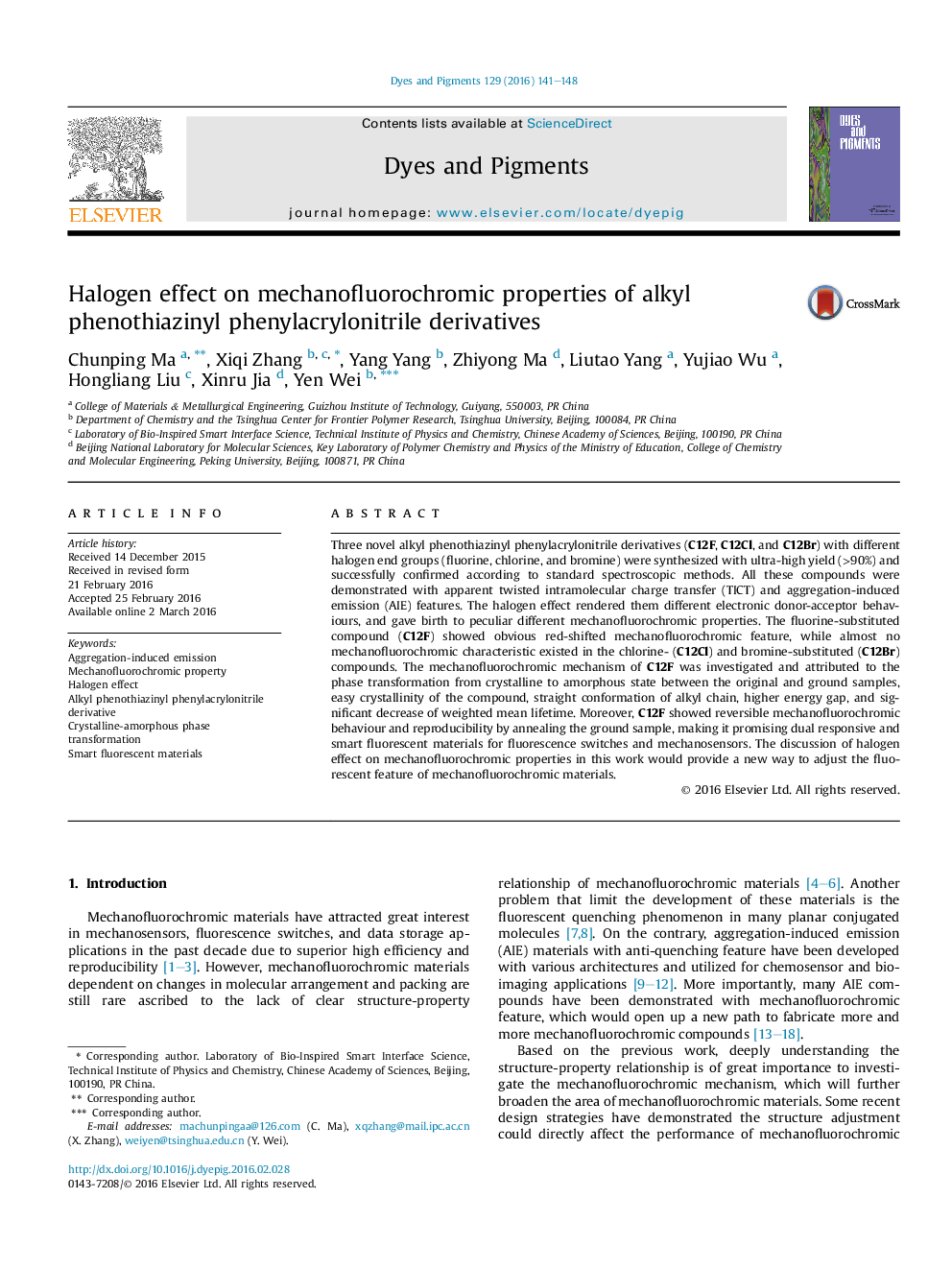| Article ID | Journal | Published Year | Pages | File Type |
|---|---|---|---|---|
| 175540 | Dyes and Pigments | 2016 | 8 Pages |
•Three new compounds with different halogen end groups were synthesized.•The mechanofluorochromism was significantly affected by halogen group.•The mechanofluorochromism was ascribed to crystalline-amorphous transformation.
Three novel alkyl phenothiazinyl phenylacrylonitrile derivatives (C12F, C12Cl, and C12Br) with different halogen end groups (fluorine, chlorine, and bromine) were synthesized with ultra-high yield (>90%) and successfully confirmed according to standard spectroscopic methods. All these compounds were demonstrated with apparent twisted intramolecular charge transfer (TICT) and aggregation-induced emission (AIE) features. The halogen effect rendered them different electronic donor-acceptor behaviours, and gave birth to peculiar different mechanofluorochromic properties. The fluorine-substituted compound (C12F) showed obvious red-shifted mechanofluorochromic feature, while almost no mechanofluorochromic characteristic existed in the chlorine- (C12Cl) and bromine-substituted (C12Br) compounds. The mechanofluorochromic mechanism of C12F was investigated and attributed to the phase transformation from crystalline to amorphous state between the original and ground samples, easy crystallinity of the compound, straight conformation of alkyl chain, higher energy gap, and significant decrease of weighted mean lifetime. Moreover, C12F showed reversible mechanofluorochromic behaviour and reproducibility by annealing the ground sample, making it promising dual responsive and smart fluorescent materials for fluorescence switches and mechanosensors. The discussion of halogen effect on mechanofluorochromic properties in this work would provide a new way to adjust the fluorescent feature of mechanofluorochromic materials.
